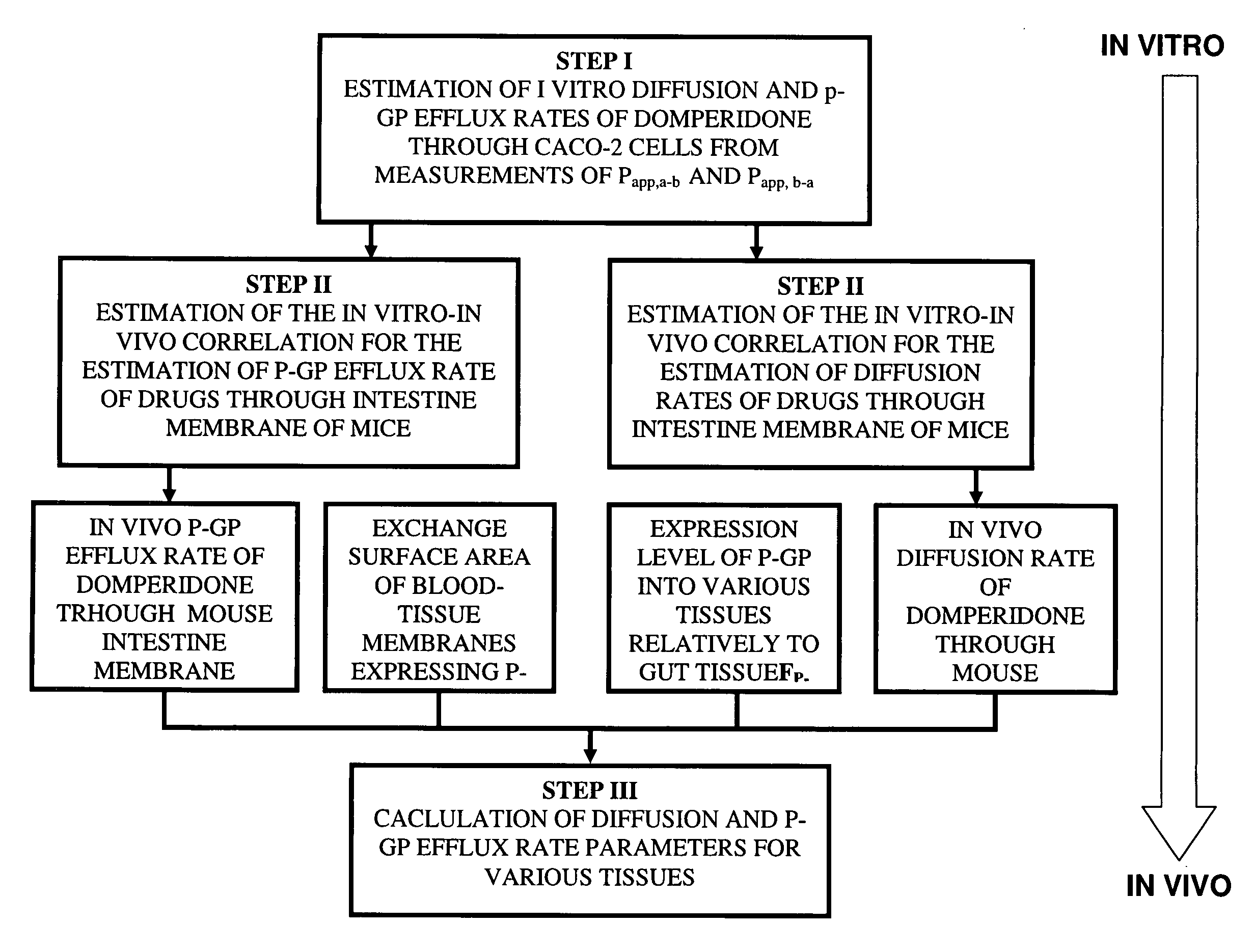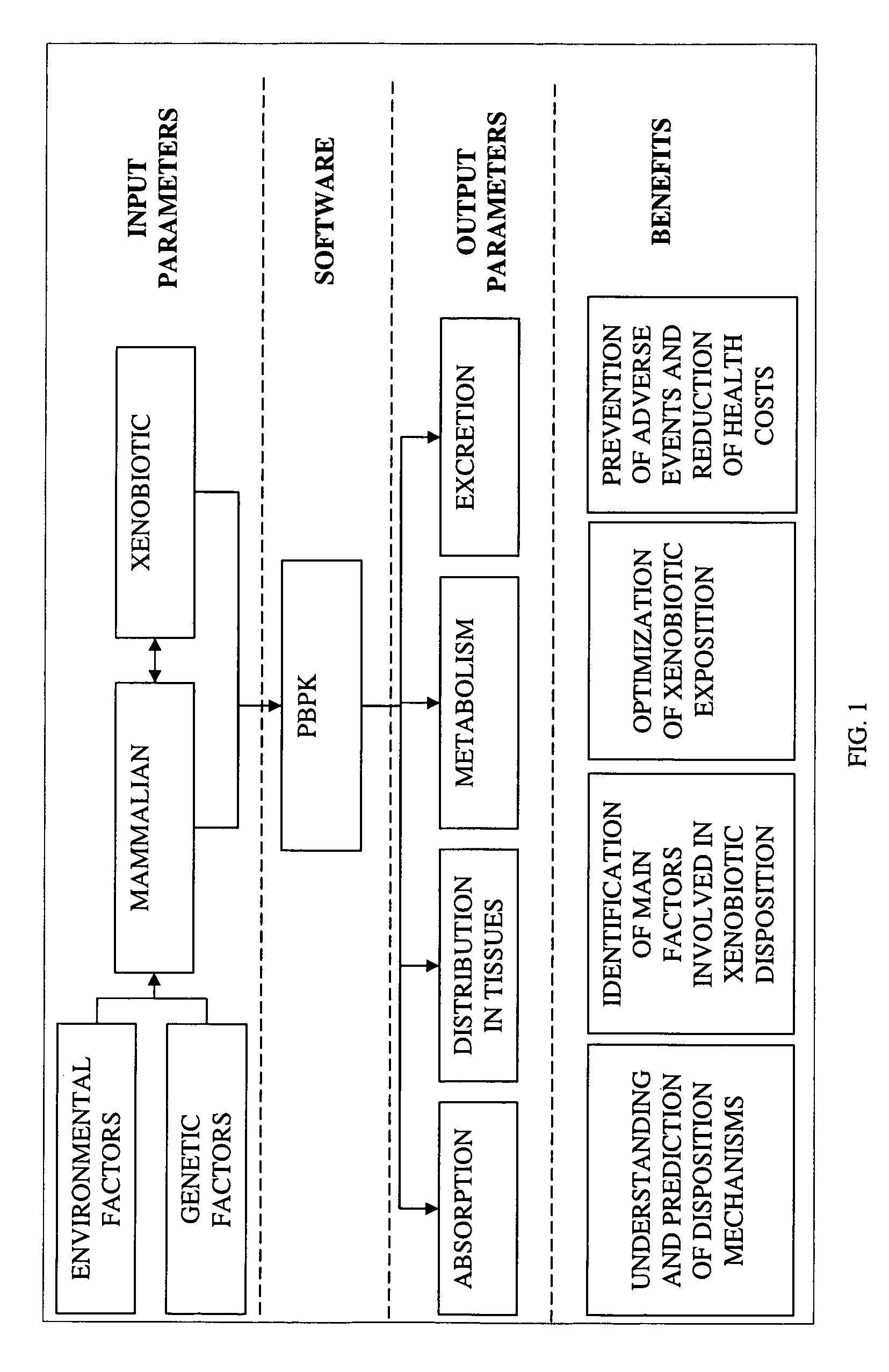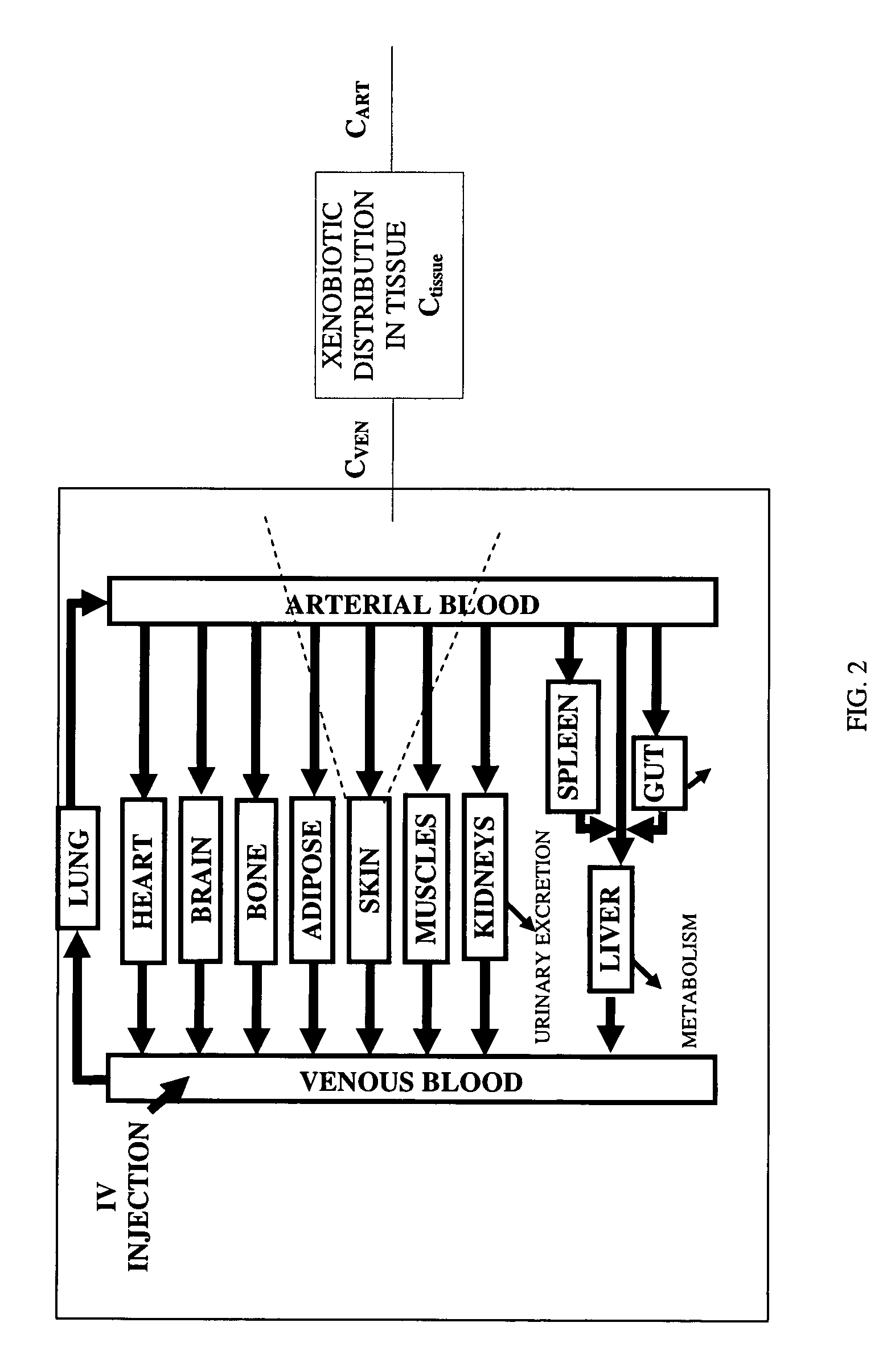Method of developing a pharmacokinetic profile of a xenobiotic disposition in a mammalian tissue
a technology of xenobiotics and pharmacokinetic profiles, which is applied in the field of developing a pharmacokinetic profile of a xenobiotic disposition in a mammalian tissue, can solve the problems of increasing the concentration of cardiac tissue, increasing the risk of cardiac arrest, and large adverse events sometimes fatal
- Summary
- Abstract
- Description
- Claims
- Application Information
AI Technical Summary
Problems solved by technology
Method used
Image
Examples
Embodiment Construction
[0058]The invention presents a computer-implemented method, based on a new PBPK modeling approach, for predicting and understanding xenobiotic disposition in a mammalian body in function of various genetic and environmental factors.
[0059]This new PBPK modeling approach takes into account the genetic expression and activity of influx / efflux transporters in mammalian tissues and predicts xenobiotic distribution in these tissues under various conditions of these transporters.
[0060]Target tissues include brain, liver, heart, kidneys, gut, muscles, skin, adipose, spleen, lung, stomach, placenta, testes, ovaries, etc.
[0061]Development of tissue models and mass balance systems around each tissue lead to a system of ordinary differential equations (ODE) representing the whole-body PBPK model. This system of equations is solved using a computer-implemented method.
[0062]The prediction of xenobiotic disposition in the mammalian body using this computer-implemented method requires parameters re...
PUM
 Login to View More
Login to View More Abstract
Description
Claims
Application Information
 Login to View More
Login to View More - R&D
- Intellectual Property
- Life Sciences
- Materials
- Tech Scout
- Unparalleled Data Quality
- Higher Quality Content
- 60% Fewer Hallucinations
Browse by: Latest US Patents, China's latest patents, Technical Efficacy Thesaurus, Application Domain, Technology Topic, Popular Technical Reports.
© 2025 PatSnap. All rights reserved.Legal|Privacy policy|Modern Slavery Act Transparency Statement|Sitemap|About US| Contact US: help@patsnap.com



